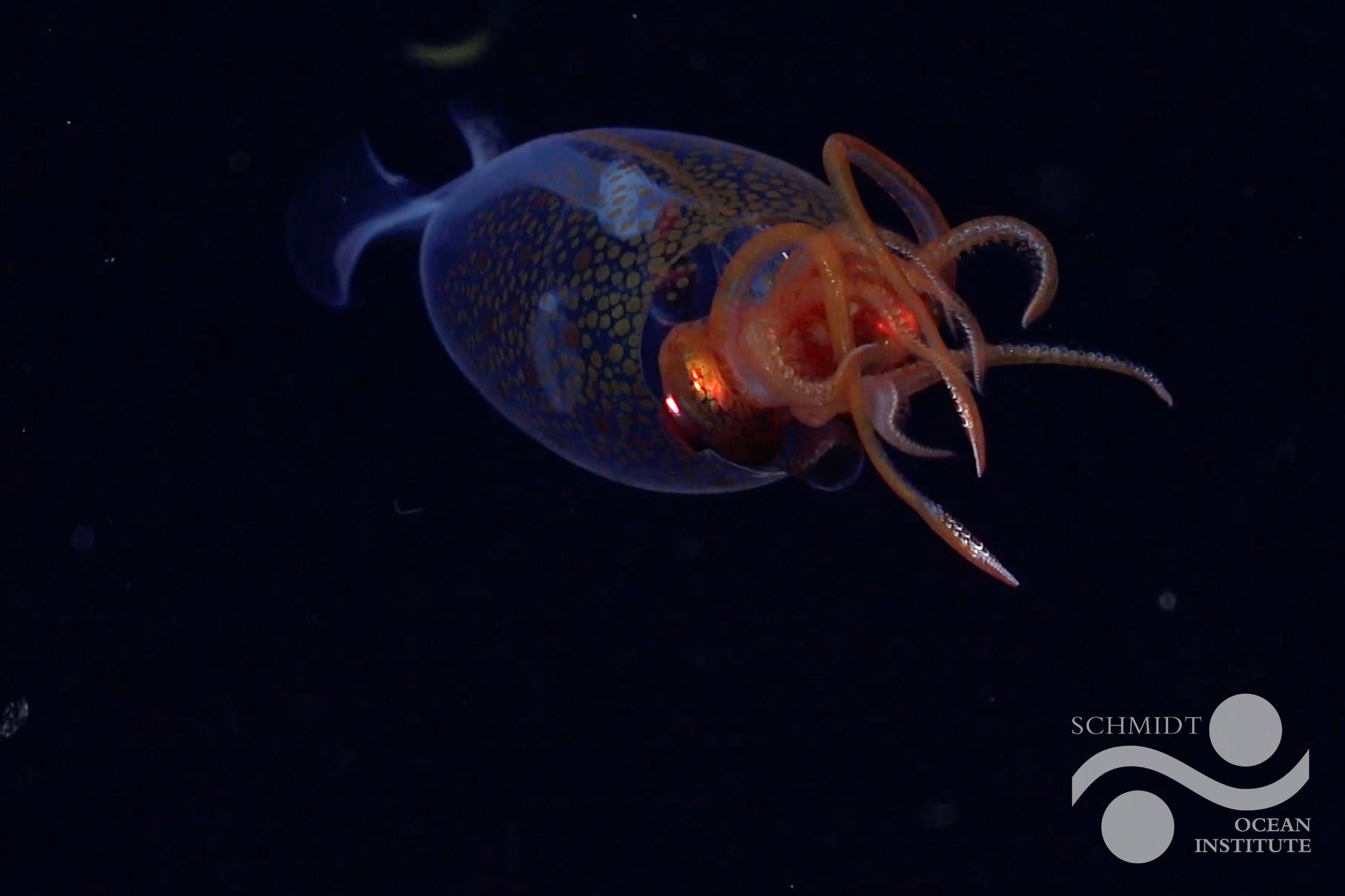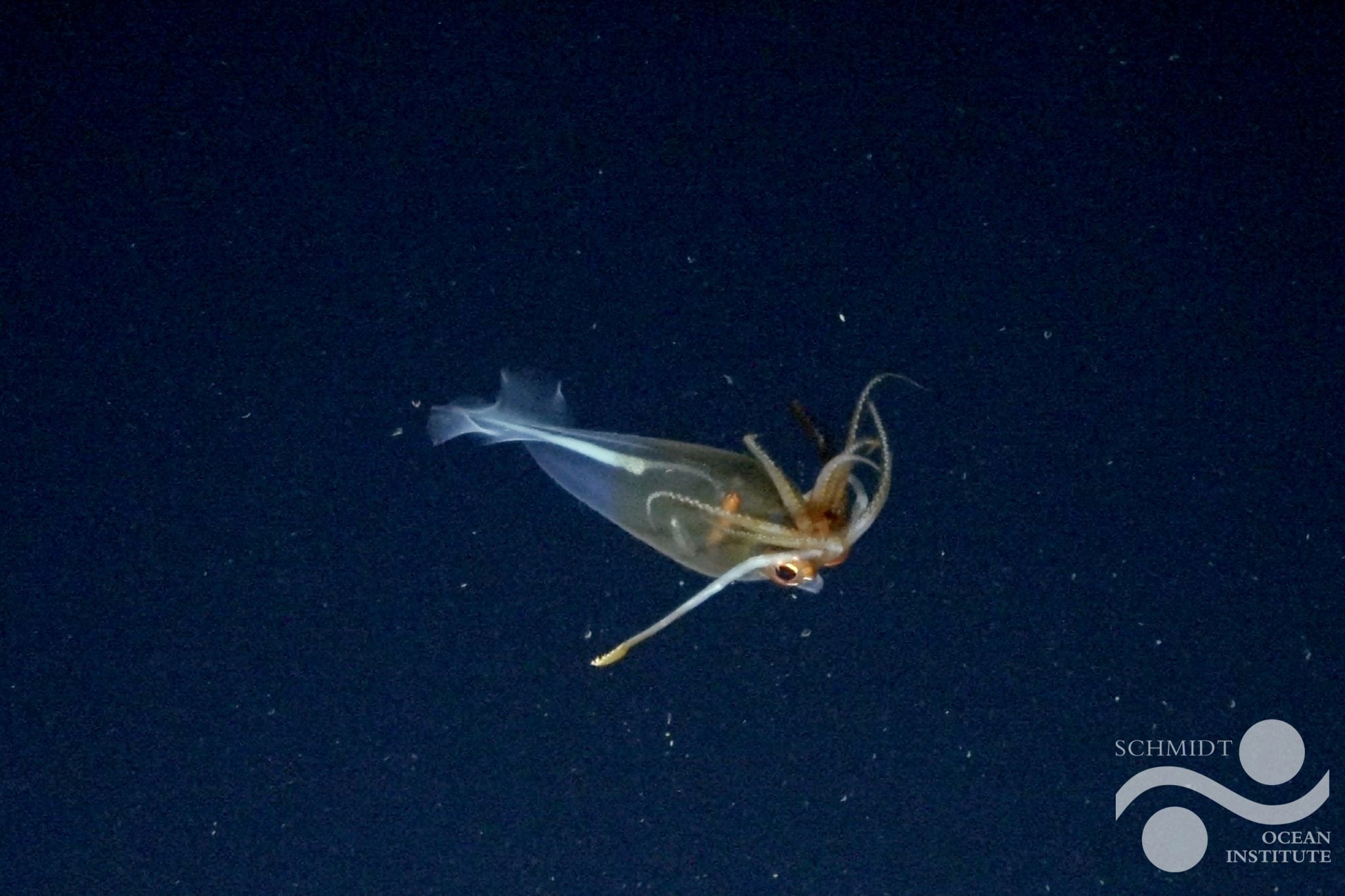ARTICLE AD BOX
Nearly a century after its initial discovery, scientists have captured footage of the colossal squid swimming in its natural deep sea environment for the first time, shedding new light on the elusive giant creature.
The colossal squid, scientifically named Mesonychoteuthis hamiltoni, is the world’s largest invertebrate, growing to a maximum of about 10 metres in length and reaching a mass of nearly half a metric tonne.
It is also the world’s largest mollusc and has the largest eyes of any known creature with a diameter of nearly 30 centimetres.
However, until now, the colossal species has only been studied based on specimens found in the guts of whales that washed ashore or from rare individuals that got scooped up accidentally by fishing boats.
Very little is known about the giant deep sea creature’s life cycle.

Now, a video of a 30-centimetre-long (11 inches) juvenile of the squid species has been captured in a world first by researchers on board the Schmidt Ocean Institute’s research vessel Falkor during a month-long expedition near the South Sandwich Islands in the South Atlantic Ocean.
Scientists captured the footage on 9 March using the institute’s remotely operated submersible vehicle SuBastian, at a depth of 600 m (1968 ft).
“It’s exciting to see the first in situ footage of a juvenile colossal and humbling to think that they have no idea that humans exist,” said Kat Bolstad, a leading squid and octopus researcher at the Auckland University of Technology..
“For 100 years, we have mainly encountered them as prey remains in whale and seabird stomachs and as predators of harvested toothfish,” said Dr Bolstad, who verified the footage for the Schmidt Ocean Institute.

One of the unique features of the colossal squid is the see-through appearance of juveniles that gradually disappear as they grow up.
The presence of hooks on the middle of their eight arms also differentiates them from their close relative, G. glacialis, whose first deep sea footage was recorded in January near Antarctica.
“The first sighting of two different squids on back-to-back expeditions is remarkable and shows how little we have seen of the magnificent inhabitants of the Southern Ocean,” said Jyotika Virmani, executive director of the Schmidt Ocean Institute.
“These unforgettable moments continue to remind us that the Ocean is brimming with mysteries yet to be solved,” Dr Virmani said.









 English (US) ·
English (US) ·